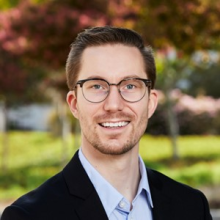-
Title
Deputy Group Leader, Lifetime Aging for Materials Advancement -
Email
burton34@llnl.gov -
Phone
(925) 422-1618 -
Organization
PLS-MSD-MATERIALS SCIENCE DIVISION
Research interests
From graduate school to now, I’ve developed and cultivated a passion for studying complex molecular spectra. My graduate studies involved synthesizing gas phase metal-containing radicals, shining microwaves on these transient molecules, and analyzing their rotational pattern. From these intricate data I would investigate the weak quantum mechanical interactions that exist within these unusual molecules. Such work is not only important to the field of chemical physics but also to astrochemistry, as these unusual molecules can exist in harsh stellar environments. My research on the silicone phosphide radical (SiP) lead to its detection in the circumstellar envelope IRC+10216.
Since then, my post-doctoral work focused on researching possible chemistry that occurs in a nuclear fireball, specifically between uranium and oxygen. Highlighted on LLNL News, this work discovered that the rate of cooling and the amount of oxygen present can affect what uranium oxides are formed. Since uranium and oxygen can form several complex structures, each with different chemical and physical properties, such results can help bound computational modeling of nuclear fallout scenarios. This research was made possible by developing a benchtop laser ablation chamber capable of studying particulates in-situ using vibrational spectroscopy.
Currently, my research within the Materials Science and Component Performance group involves investigating possible chemical or physical incompatibilities between materials. Such work involves artificially aging materials (by using, for example, heat or radiation) and spectroscopically analyzing them to reveal any decrements to their intended purpose. Specifically, my goals are focused on materials that contain interactions with high explosives to determine if these reactive compounds become more sensitive (i.e., less safe) over time.
Current position(s)
Materials Aging, Compatibility, and Performance (MAC&P) principle investigator.
Highlights
- How oxygen concentration and cooling rate affect uranium oxide formation (1. LLNL News and 2. Research Article)
Subject Matter Expertise
- Spectroscopy, chemical physics, chemical degradation
Post-Doctoral Researcher, Materials Science, Lawrence Livermore National Lab, 2022
Ph.D., Physical Chemistry, University of Arizona, 2020
B.S., Chemistry, Towson University, 2015
Selected publications
- M.A. Burton, B.A. Steele, J.C. Crowhurst, A. Racoveanu, I.-F. Kuo, W.L. Shaw, and R.H. Gee, Vibrational Spectra of HNIW and its Isotopologues: A Combined Experimental and Computational Study, Prop., Explos., Pyrotech. 48, e202200349 (2023)
- M.A. Burton, P.M. Sheridan, and L.M. Ziurys, The Millimeter-Wave Spectrum of the SiP Radical (X2Πi): Rotational Perturbations and Hyperfine Structure, J. Chem. Phys. 157 184307 (2022)
- M.A. Burton, A.W. Auner, J.C. Crowhurst, P.S. Boone, L.A. Finney, D.G. Weisz, B. Koroglu, I. Jovanovic, H.B. Radousky, and K.B. Knight, The Effect of Oxygen Concentration on the Speciation of Laser Ablated Uranium, Sci. Rep. 12 4030 (2022)
For a full list, see ORCID (0000-0001-7788-739X)


